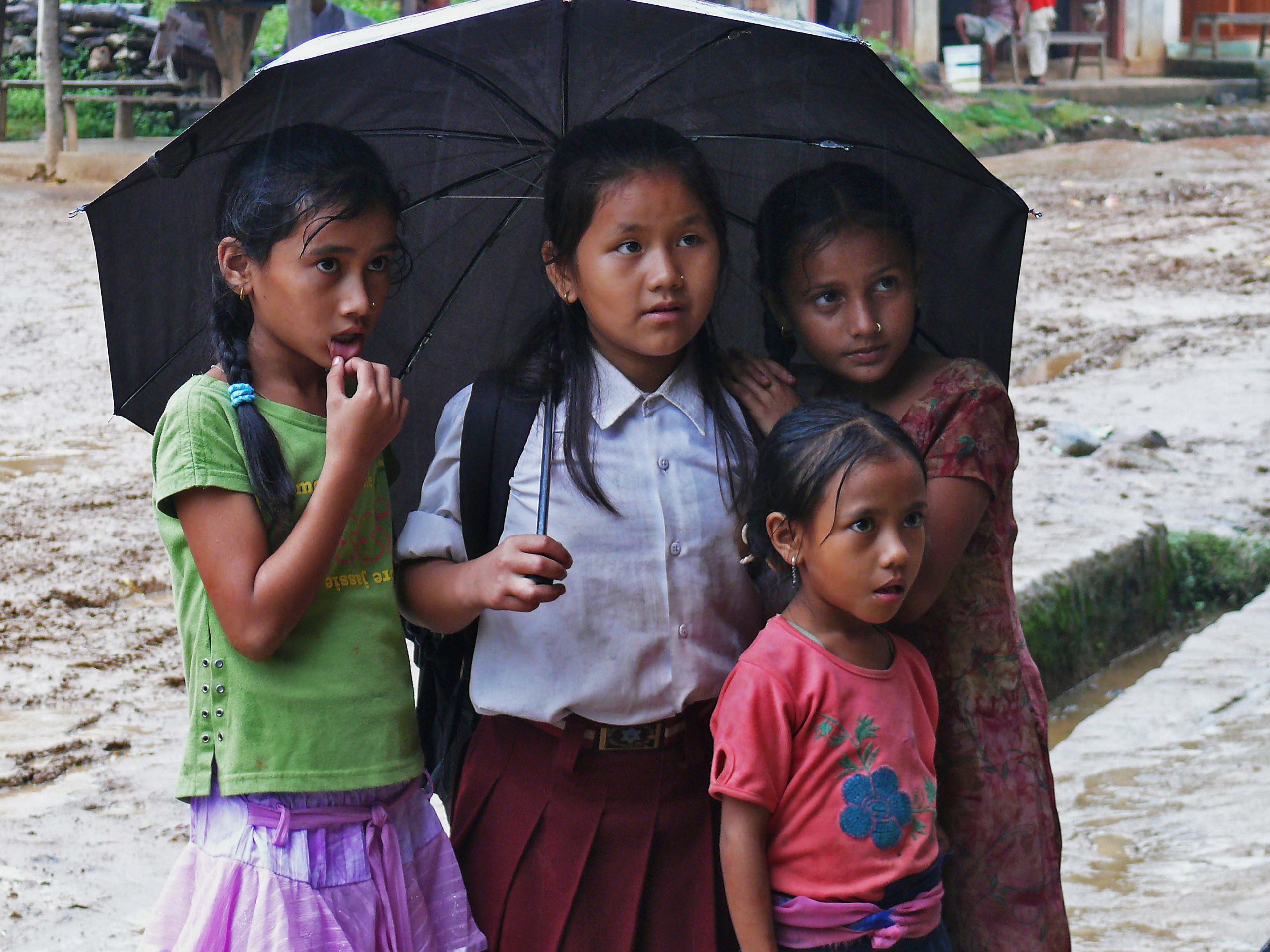Heavy rainfall and floods are deluging southern Asia. In total, over 1,500 lives have been lost in Nepal, Bangladesh and India. Is this climate change in action?
The heavy rainfall came as no surprise for the Indian Institute of Tropical Meteorology. Girls in Nepal. (Photo: Wikimedia Commons)
“It is too early to say whether this extremely heavy monsoon is due to climate change,” says clouds and climate researcher Prof. Pier Siebesma of the department of Geoscience & Remote Sensing.
“Climate researchers are now performing so-called ‘attribution analysis’, in which the likelihood of such an extreme event is calculated using models that take climate change into account and compare them to a calculated probability that does not take climate change into account. As far as I know, no such study has been published yet.”
“Though we cannot (or not yet) pinpoint global warming as the cause of this extreme event, it is safe to say that global warming has increased the chances of this extreme weather.”
Normally people in India, Nepal and Bangladesh look forward to the monsoon. Its onset is very irregular. If it starts late, temperatures can rise to 50 degrees centigrade in some places. This time the rain was less welcome. The city of Mumbai received over 700 mm over the last week with a stunning amount of over 300 mm on August 29.
A warmer atmosphere simply holds more water vapour
Did the extreme amount of rain and flooding come as a surprise? “Not at all,” says meteorologist Parthasarati Mukhopadhyay, a colleague of Siebesma, from the Indian Institute of Tropical Meteorology (IITM) in Pune (India). “We predicted the August 28-29 precipitation events in Mumbai using a new high resolution weather prediction model six days ahead.”
Monsoons are annual phenomena in southern Asia. According to the Royal Meteorological Society, the Indian monsoon is generally remarkably stable, with a mean total rainfall of around 850mm in the months of June to September, and an interannual (year-to-year) variation of only around 10% in most cases.
So how does climate change influence the monsoon? A warmer atmosphere simply holds more water vapour, leading to heavier rainfall when it does occur. And the warmer it is, the more that precipitation in the Himalayas will take the form of rain instead of snow. Rain immediately flows downwards.
“In addition”, says the Delft researcher, “for the Indian monsoon another mechanism might play a role. Due to climate change, the summer temperature contrast between the Indian continent and the adjacent Indian Ocean is increasing. This increased temperature contrast induces a stronger monsoon circulation, very much like a land-sea breeze, and supports stronger precipitation.”
Do you have a question or comment about this article?
tomas.vandijk@tudelft.nl


Comments are closed.